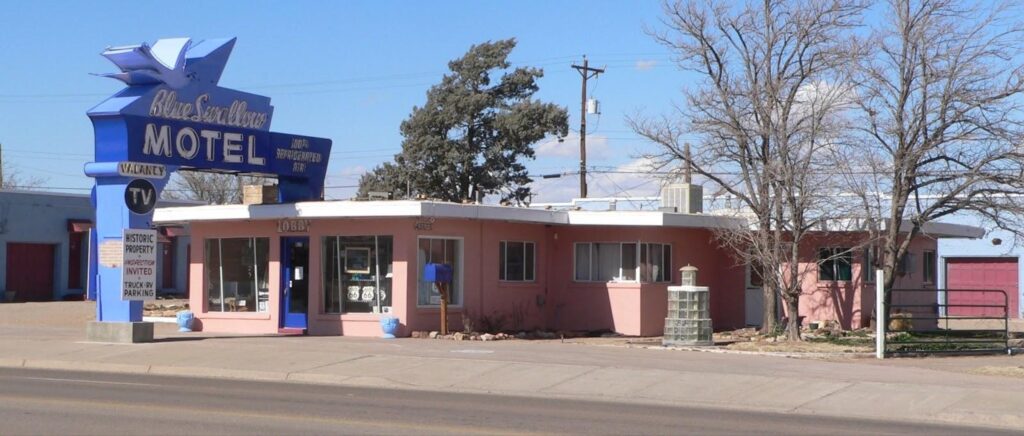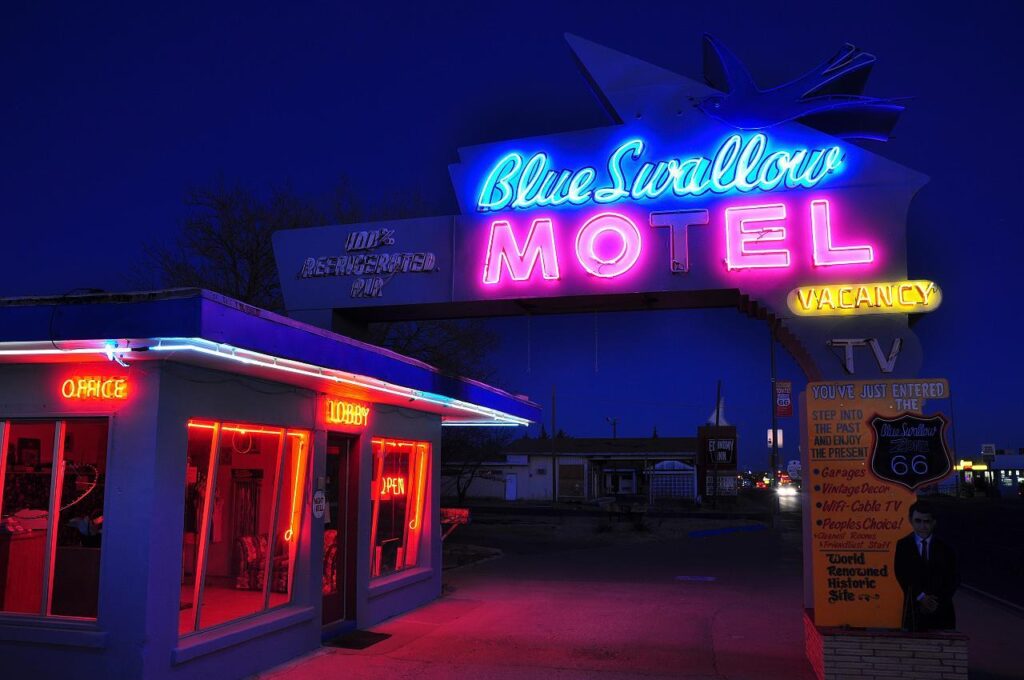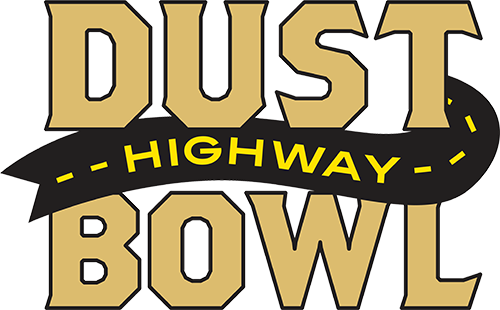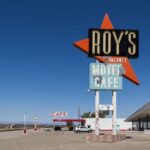Imagine Route 66. What comes to mind? These 5 architectural styles will help define that “look” you know so well.
1. GOOGIE architecture: After winning the second World War, America was more optimistic than ever. With its sights set on the future, this architectural style captures the fascination with space-age technology and progress. From the 1940’s to the 1960’s, sweeping curves and dynamic angles gave structures a feeling of progress and momentum. Bright neon signs illuminated a path to the future. The atomic age and the space race were reflected in illustrations of rockets and stars on buildings and iconic signage.
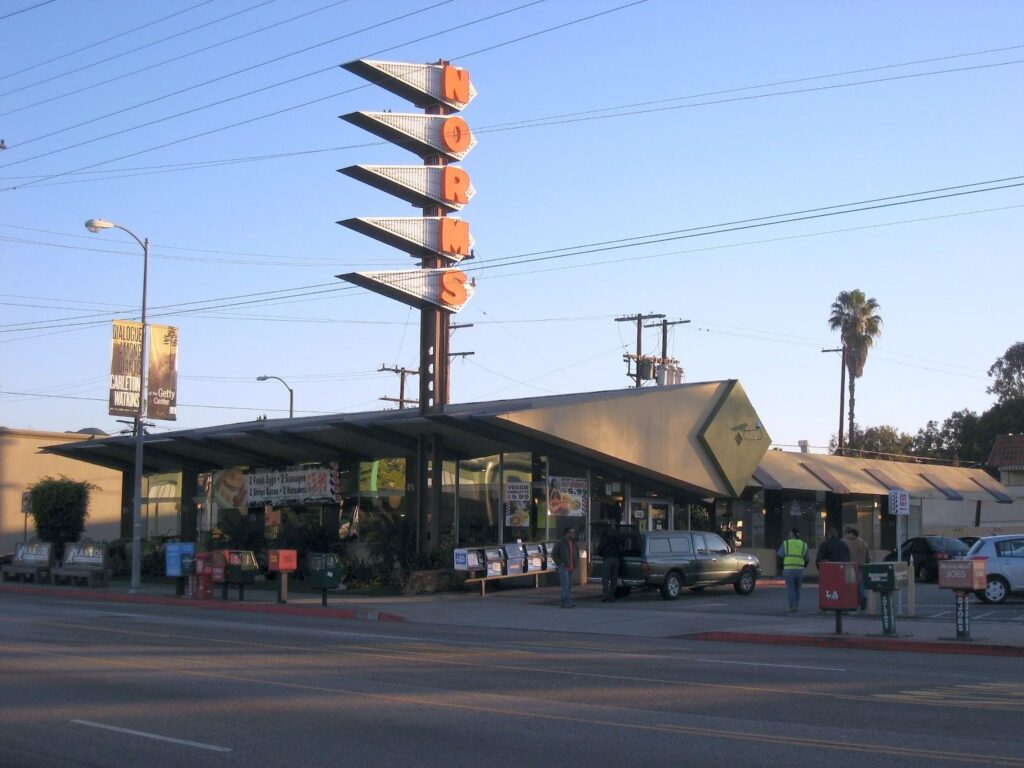
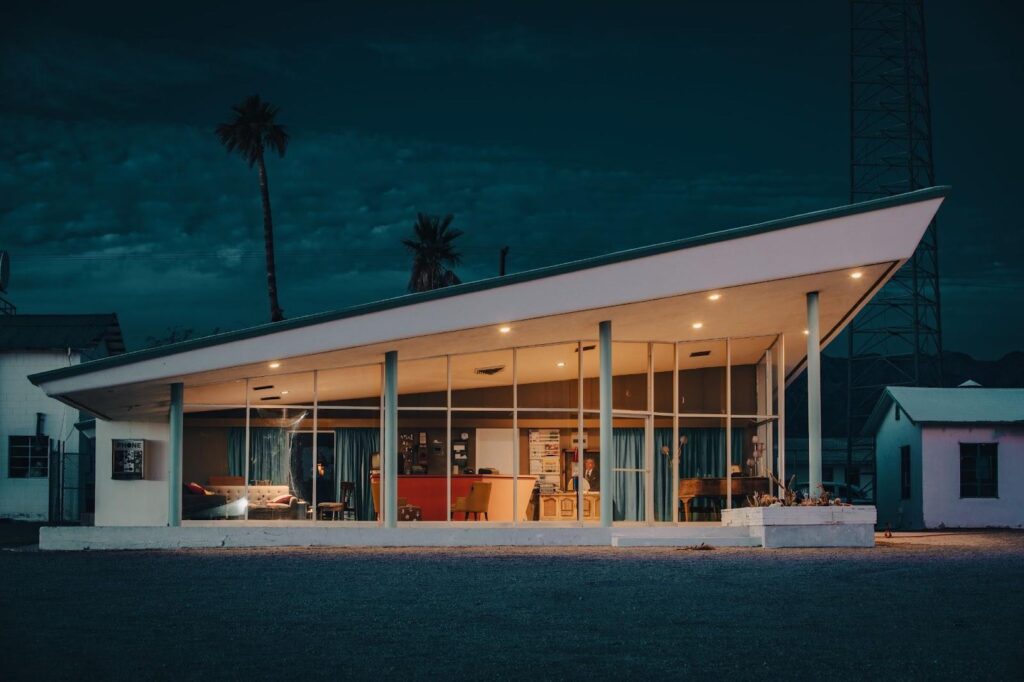
2. STREAMLINE MODERNE is the futuristic evolution of Art Deco. Reflective of a culture’s obsession with speed, efficiency, and modern tech, this architectural form is inspired by the smooth curves associated with cars, airplanes, and other forms of transportation. A sense of motion is paramount. Glass, chrome, and stucco are used to accentuate the sleek, polished aesthetic. Interestingly, this style was popular during the great depression, because minimalism meant affordability without sacrificing style.
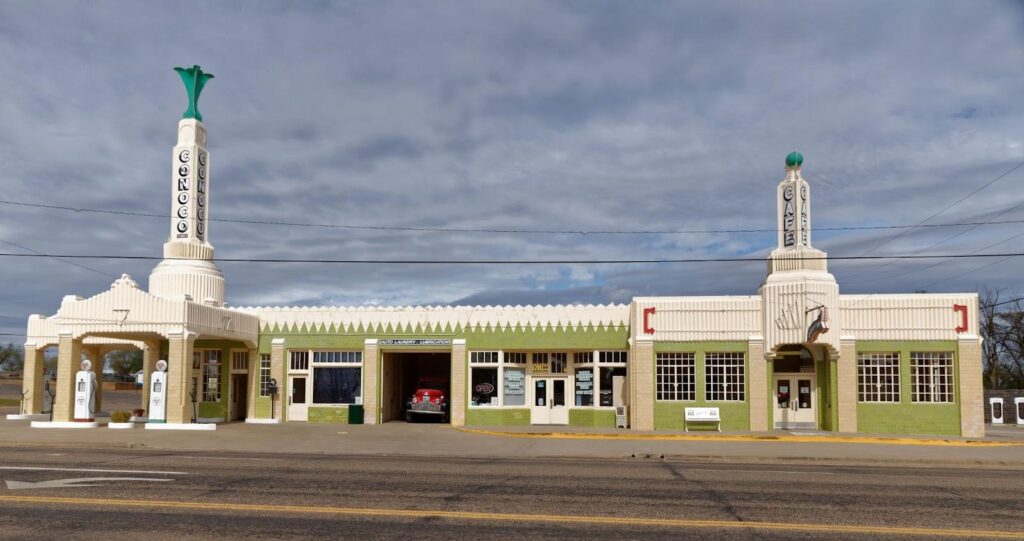
3. PUEBLO REVIVAL is yet another common architectural style seen along the Dust Bowl Highway. It combines the traditional adobe structure of Southwest Indigenous peoples, with a Spanish Colonial influence. Aesthetically earthy, these structures live in harmony with a surrounding desert landscape.
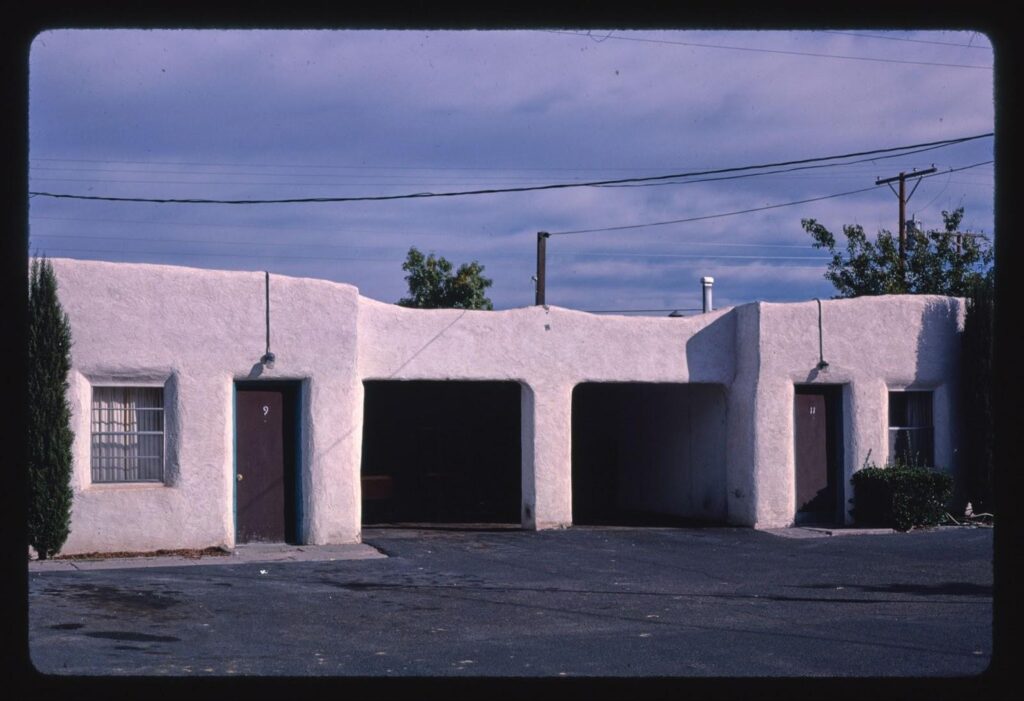
4. NOVELTY ARCHITECTURE is one of the most iconic along Route 66. This playful style takes the form of oversized objects, turning everyday items into unique structures that can be entered and even stayed in. It’s a perfect combination of creativity and commerce.
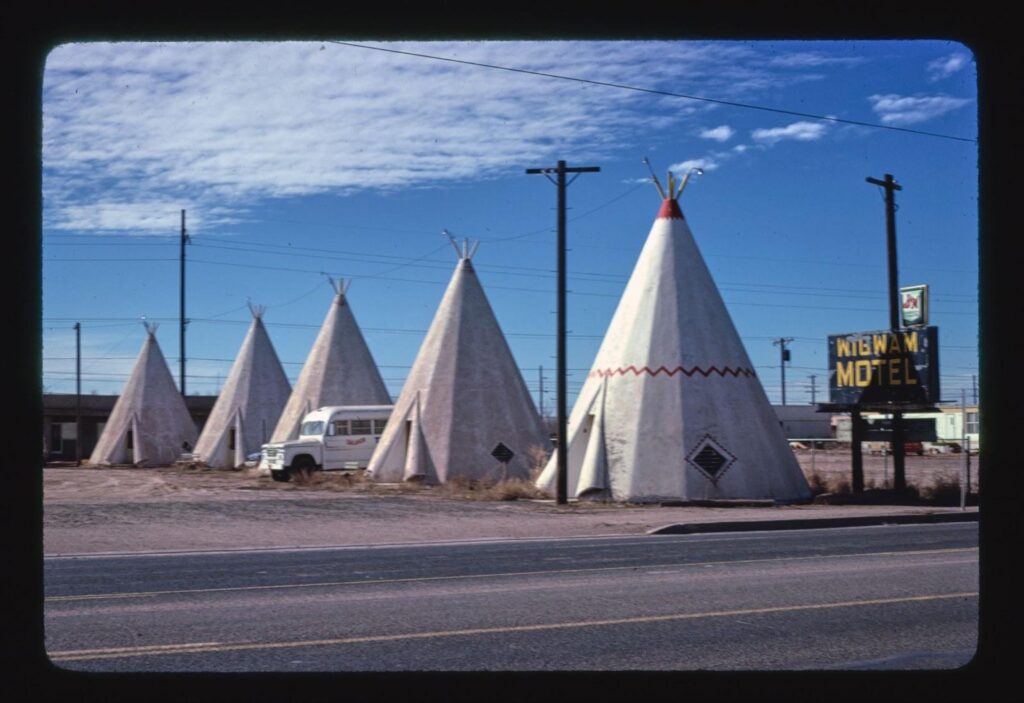

5. MID-CENTURY MODERN architecture emerged after the second World War. The clean lines and minimalist aesthetic that define this style are made using steel, glass and concrete. Large windows, an open floor plan, and a focus on geometry represent a culture’s optimism in a burgeoning automobile era.
